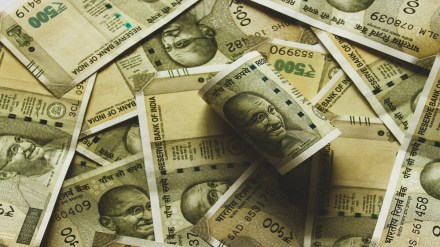8th Pay Commission: The Modi government recently gave its go-ahead to the new pay panel which is expected to give its recommendations on salary and pension revision for central government employees in a few months from now. The 8th Pay Commission will submit its final report to the Centre which will take a final call on how the panel’s suggestions should be implemented. It is widely expected that the government will implement the 8th Pay Commission’s recommendations from January 1, 2026.
Ever since the announcement was made by the government on January 16, central government employees and pensioners are keen to know about the fitment factor the proposed panel will suggest for revising salaries and pension for the staff. Once the fitment factor is decided, the whole pay matrix will be known to all central government employees across levels 1 to 10. The fitment factor is a multiplier used to calculate the revised salary by applying it to the current basic pay.
Under the 8th Pay Commission Pay Matrix, the new panel will calculate emoluments for employees at different job levels.
Under the 7th Pay Commission, the fitment factor was fixed as 2.57, which saw the minimum basic pay for a government employee going up from Rs 7,000 to Rs 18,000.
What is expected maximum fitment factor under the 8th Pay Commission?
For the 8th Pay Commission, it is anticipated that the fitment factor will rise to 2.86, potentially raising the minimum basic pay to Rs 51,480 — a remarkable 186% increase from the current Rs 18,000, as per reports. Experts are of the view that the actual salary hike might be slightly lower due to various deductions and other adjustments. In this story, let’s take a look at projections based on the assumed fitment factor of 2.86.
With the expected fitment factor of 2.86 under the 8th Pay Commission, the revised basic pay for central government employees across different levels of the Pay Matrix is anticipated to increase as follows:
| Pay Level | Current Basic Pay (7th CPC) | Expected Revised Basic Pay (8th CPC) | Increase (Approx) |
| Level 1 | ₹18,000 | ₹51,480 | ₹33,480 |
| Level 2 | ₹19,900 | ₹56,914 | ₹37,014 |
| Level 3 | ₹21,700 | ₹62,062 | ₹40,362 |
| Level 4 | ₹25,500 | ₹72,930 | ₹47,430 |
| Level 5 | ₹29,200 | ₹83,512 | ₹54,312 |
| Level 6 | ₹35,400 | ₹1,01,244 | ₹65,844 |
| Level 7 | ₹44,900 | ₹1,28,414 | ₹83,514 |
| Level 8 | ₹47,600 | ₹1,36,136 | ₹88,536 |
| Level 9 | ₹53,100 | ₹1,51,866 | ₹98,766 |
| Level 10 | ₹56,100 | ₹1,60,446 | ₹1,04,346 |
Level 1: Peons, Attendants, MTS (Multi-Tasking Staff) performing essential support tasks.
Level 2: Lower Division Clerks (LDCs) managing clerical and routine administrative duties.
Level 3: Constables and Skilled Trades Staff in police, defense, or public services.
Level 4: Stenographers (Grade D) and Junior Clerks managing transcription and documentation.
Level 5: Senior Clerks, Assistants, or Technical Staff providing higher-level administrative or technical support.
Level 6: Inspectors, Sub-Inspectors, and Junior Engineers (JEs) in technical or supervisory roles.
Level 7: Superintendents, Section Officers, or Assistant Engineers (AEs) handling project management or complex administrative tasks.
Level 8: Senior Section Officers or Assistant Audit Officers, managing audits or higher administrative functions.
Level 9: Deputy Superintendents of Police (DSPs) or Accounts Officers, responsible for operational or financial management.
Level 10: Group A Officers, such as Assistant Commissioners or entry-level officers in services like IAS, IPS, and IFS.
What lies ahead
It is expected that, as it happened with the 7th Pay Commission, the 8th Pay Commission will also use the Aykroyd formula to arrive at a decision concerning salary and pension hikes to be proposed for central government staff, considering the current economic realities. Let’s first understand the Aykroyd formula and how it shaped the 7th pay panel recommendations.
What is the Aykroyd Formula?
The Aykroyd formula was developed by Dr. Wallace Aykroyd, a nutritionist, to estimate the minimum cost of living. The formula suggested calculating wages based on the nutritional requirements of an average worker.
The 7th Pay Commission had raised the minimum basic pay from Rs 7,000 to Rs 18,000 for central government employees, using the Aykroyd formula. This salary hike was calculated based on the cost of living and nutritional requirements at the time.
When will govt appoint the members of the 8th pay panel?
After announcing the news about the formation of the 8th Pay Commission on January 16, Union Minister Ashwini Vaishnaw said that the government will soon appoint two members and a chairman who will head the panel. However, he did not share much about the timeline.
